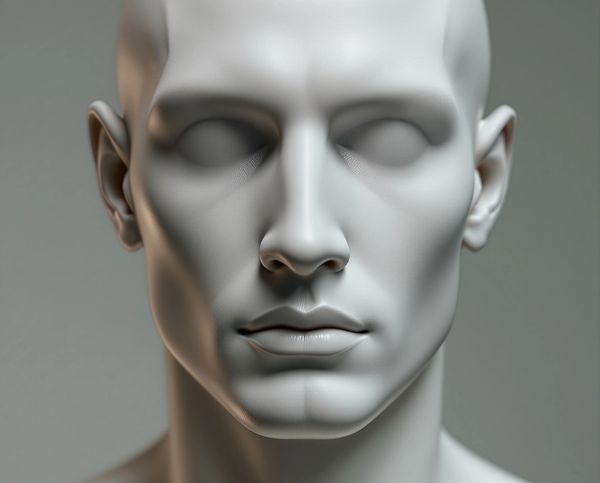Introduction

I’m David Name, a London-based synthographer working exclusively with artificial intelligence. This website is my online portfolio — a virtual gallery of AI-generated synthographic artwork exploring illusion, materiality, and the photographic image across a series of themed projects. From imagined ceramics and sculptural illusions to fabricated flowers and synthetic prints, every image explores what it means to make meaning in a world of simulation. This is not a curriculum vitae or an autobiography; it’s a dialogue with technology — a collaboration between man and machine. People once said photography wasn’t art, but time has a way of altering perception. Now they say the same about generative AI — but in this space between fiction and reality, a new kind of art emerges. As real as Magritte’s pipe, as logical as Duchamp’s urinal, these works are digital hallucinations: crafted from prompts and photographed without a camera.
For enquiries: davidname.london@gmail.com
Latest projects
Archive
Project #38
Project #38
This project stands as the bridge between past and future — a beginning disguised as an ending. Here, Flux.2 reinterprets eighteen earlier projects using their original texts, reading, misreading, and reimagining them into new forms. Not a retrospective but a hinge, Archive reveals how vision evolves when one system inherits the dreams of another.
Project #38
Project #38
Project #38
A study of male self-performance in the era of the mirror selfie. These eighteen synthographic images explore vanity, eroticism, and the rituals of the body — where men pose for an unseen audience and the camera becomes both confessional and stage. A portrait of masculinity where exhibitionism and sexuality merge, created with Flux.2. Pro by Black Forest Labs.
Garçon
Project #38
Physicus
Here I present eighteen synthetic black & white portraits made with Flux.2 Pro — images that behave like photographs yet belong entirely to the digital imagination. These young men feel observed rather than invented, holding a quiet, contemporary presence that questions what portraiture becomes when the sitter is a fiction rendered with photographic precision.
Physicus
Project #38
Physicus
Eighteen synthographs which explore the male body not as an object, but as an active, physical presence. These synthetic figures stand, strain, kneel, and touch — rendered with the gravity of historical figure painting and the immediacy of queer desire. Drawing on physique culture and creation myth, the series presents masculinity as animated, palpable, and fully alive.
Recent projects
Storm
Illustra
Trinity
Here, brushstrokes become internal weather systems. Storm investigates mood instability through abstraction — how depression is not a metaphor but a real climate in the mind. These synthographs fracture the language of painting: bold gestures, bruised tones, shifting pressure. They are psychological environments — visceral, agitated, and restless.
Trinity
Illustra
Trinity
Three materials that should resist one another — glass, ceramic, and wood — are persuaded to coexist. Under the precision of artificial intelligence, they learn empathy through tension. Each image reveals a fragile accord: clarity meeting weight, reflection meeting warmth, difference held in balance. Beauty emerges, not from harmony, but from understanding.
Illustra
Illustra
Illustra
Illustra explores the origins and future of illustration through simple, AI-generated drawings of everyday ingredients. These images question what remains of craft when the hand is replaced by the prompt. A collaboration between artist and machine, the series reflects on skill, authorship, and the evolving act of making pictures in the age of artificial intelligence.
Lumen
Illustra
Illustra
Light isn’t colour; it’s energy. This project explores illumination as both substance and condition — geometry, vibration, and frequency rendered as synthographic digital artworks. Across eighteen images, light behaves like a living force: crystalline, etherial, and infinite. The work is not about looking at light, but standing within its quiet radiance.
Totem
F31.ER4SE
Viscera
On the pebble beaches of Rottingdean, on the south coast of England, Totem gathers seaweed, feathers, driftwood, and stone into quiet digital rituals. Each assemblage feels handmade and elemental — part sculpture, part apparition — a series of small prayers to impermanence, offered to the tide where nature and imagination briefly touch.
Viscera
F31.ER4SE
Viscera
This project explores the sensation of flesh through simulated paint — not the body’s external image, but its inner pulse. Eighteen synthographs blur language and material, where meat becomes metaphor and colour behaves like anatomy. A meditation on matter, mortality, and beauty hidden from view beneath the surface.
Splice
F31.ER4SE
F31.ER4SE
Splice explores collaboration between artist and artificial intelligence — a fusion of craft and cognition. These synthographs draw on the ceramic “third firing,” where matter gains reflection and unpredictability. Each piece becomes a dialogue between human and machine: language as clay, image as thought, surface as consciousness.
F31.ER4SE
F31.ER4SE
F31.ER4SE
A series of eighteen digital camouflage paintings exploring bureaucratic distortion, diagnostic uncertainty, and the quiet violence of misinterpretation. F31.ER4SE transforms system failure into abstract pattern, colour drift, and procedural fracture — a synthographic examination of how institutions see, mis-see, and overwrite the human.
Copyright © David Name 2025.
All rights reserved.
